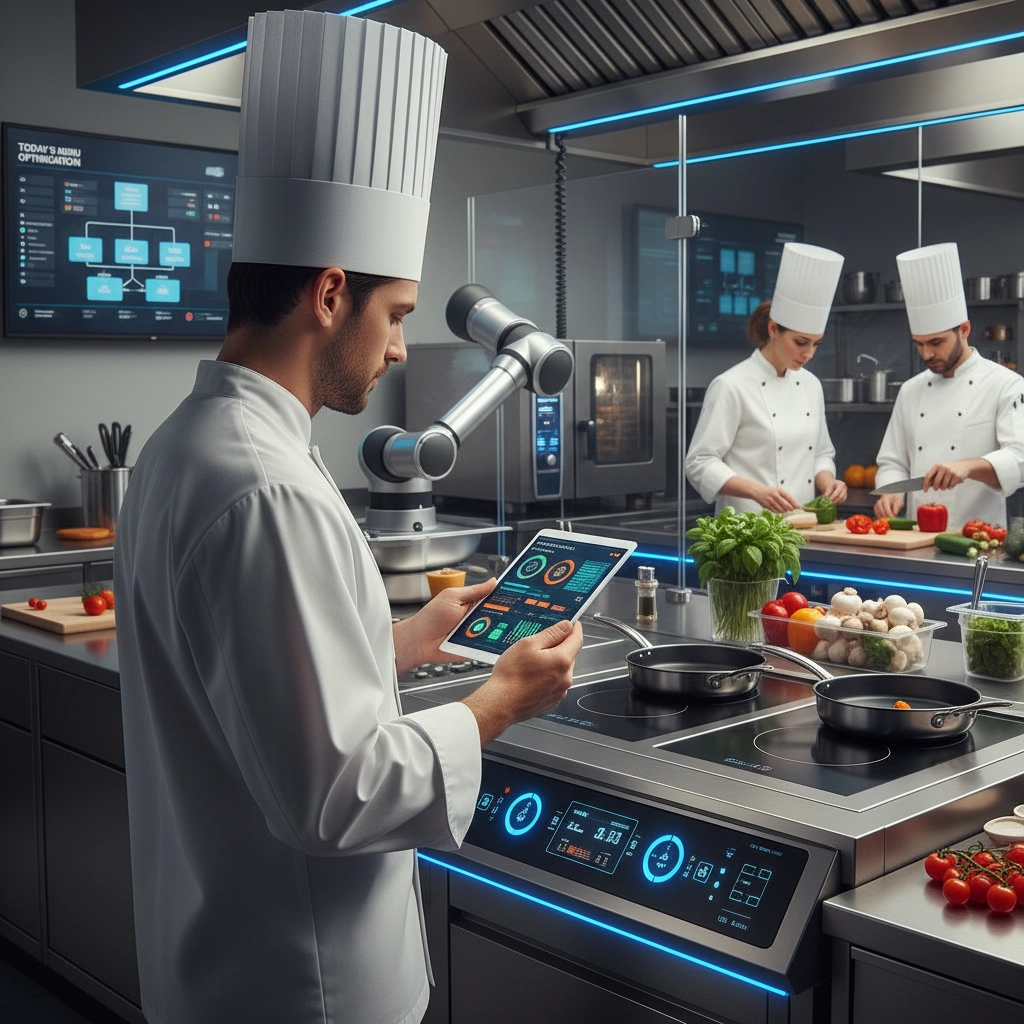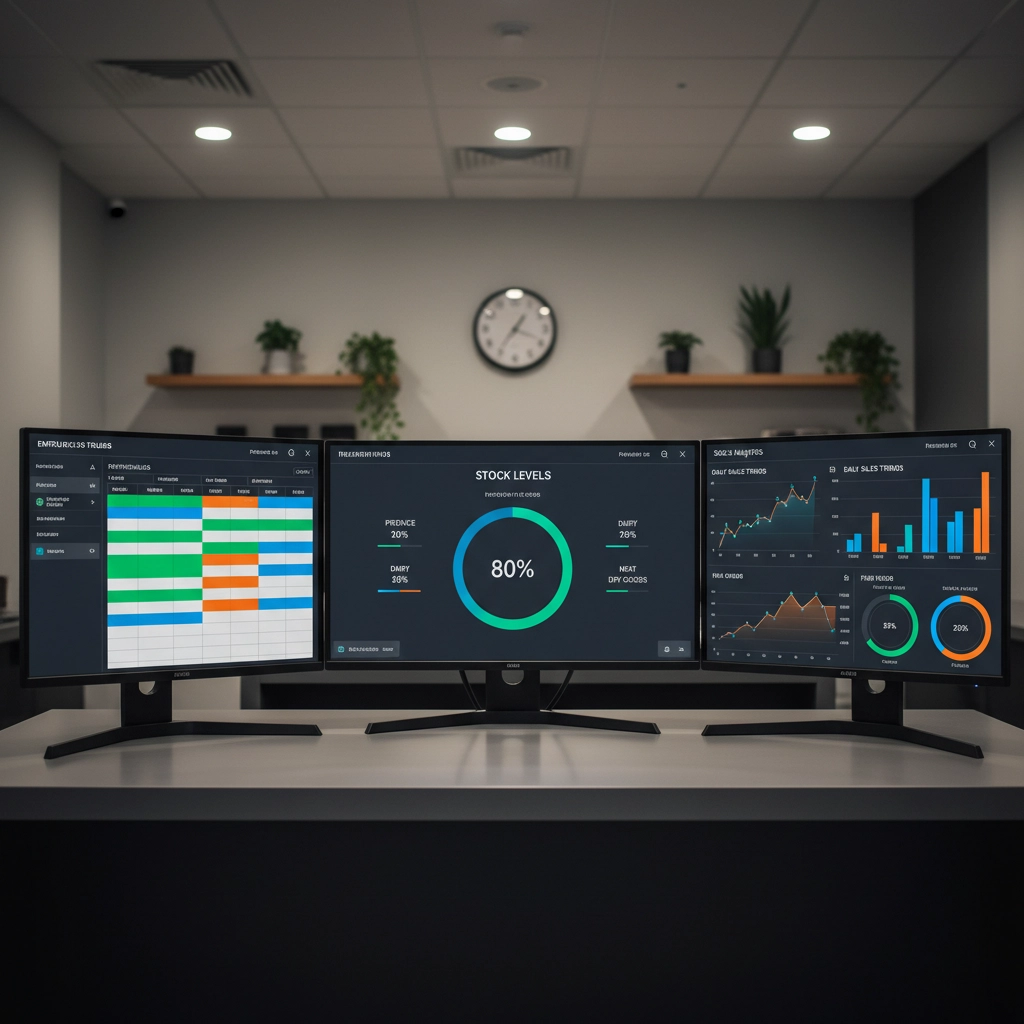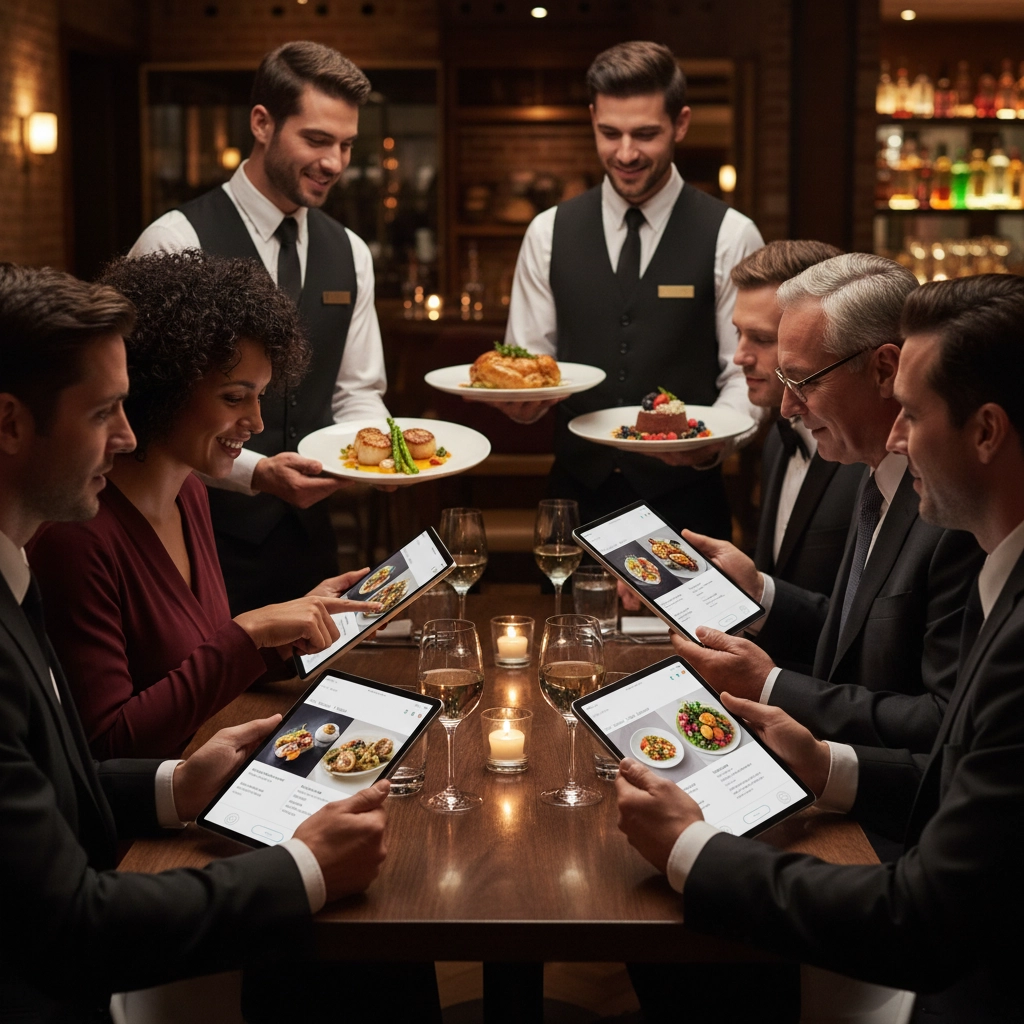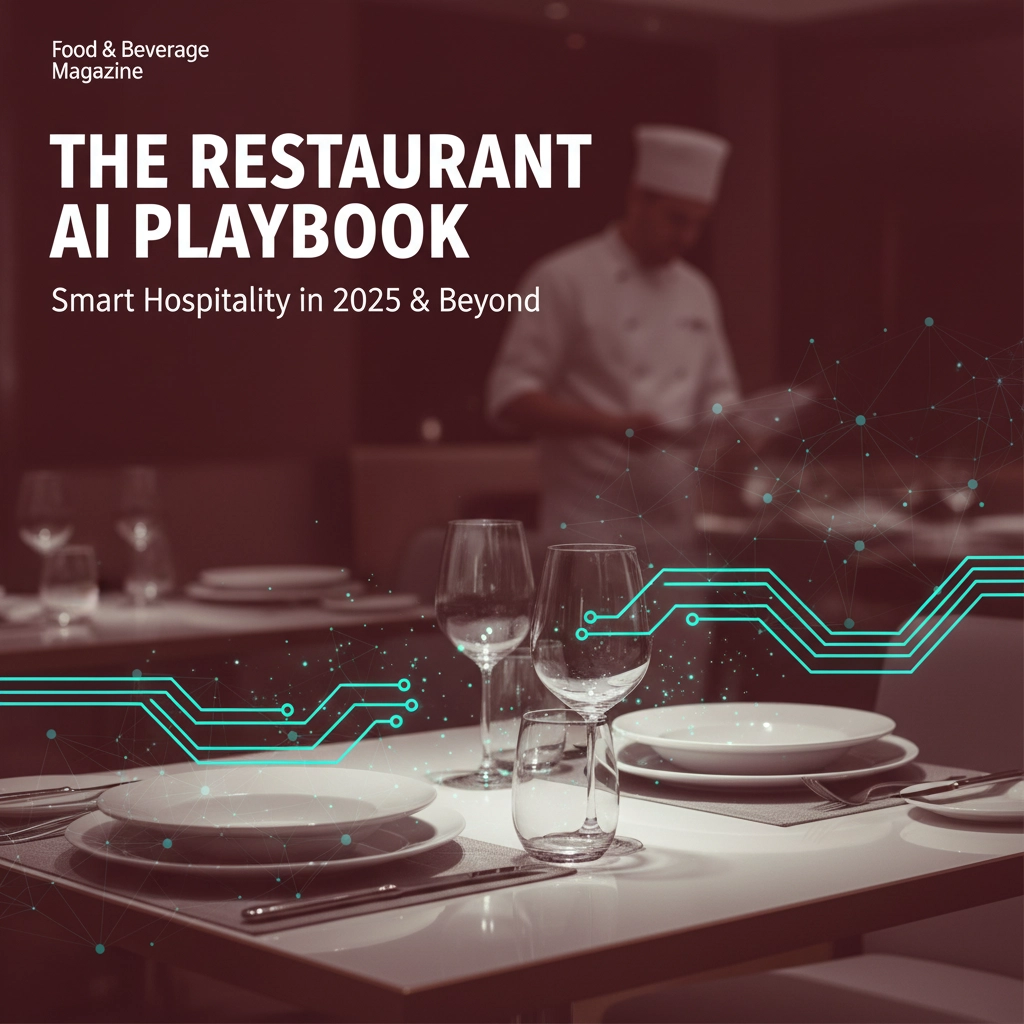Artificial Intelligence isn’t coming to restaurants: it’s already here, and it’s transforming everything from kitchen operations to customer engagement. With nearly 70% of operators now exploring or deploying AI-driven tools, we’re witnessing the most significant technological shift in foodservice since the point-of-sale system. The question isn’t whether to adopt AI, but how to do it strategically.
The AI Revolution: Why Now Matters
The numbers tell a compelling story. Restaurants leveraging AI at scale are seeing food waste reductions of 30–50%, labor costs cut by 10–20%, and inventory turnover improvements of 15–25%. But beyond the balance sheet, AI delivers something even more valuable: the ability to provide personalized, efficient service that today’s guests expect.
Labor shortages and rising costs have created the perfect storm for AI adoption. What once seemed like futuristic technology now addresses immediate, practical needs. Smart scheduling systems alone can save operators 8 hours per week while cutting labor overages by $1,200 monthly.

Real-World AI Applications Driving Results
Smart Scheduling That Actually Works
AI-powered labor platforms like Fourth and 7shifts forecast demand using historical sales, local events, and weather data. The result? Staffing plans that minimize overtime while ensuring adequate coverage during rush periods.
Case Study: A regional burger chain used AI-powered demand forecasting to cut weekly food waste by $2,500 and reduce overtime by 18% over six months: while increasing net promoter scores by 15 points.
Menu Engineering Goes Digital
Dynamic menu boards powered by AI adjust recommendations based on inventory levels, trending dishes, and individual guest profiles. Guests ordering through tablets or kiosks receive personalized suggestions, driving 8–15% increases in average check size.
Inventory Optimization That Pays
Predictive ordering systems analyze POS data, weather patterns, and supply chain status to generate automated purchase orders. One multi-location chain cut inventory costs by 19% and reduced stockouts by 80% in their first year.

The Technology Stack: Choosing Your AI Partners
Success starts with selecting the right technology partners. Here’s what matters most:
Integration Capabilities
- Ensure seamless connection with existing POS and back-office systems
- Look for APIs that support real-time data sharing
- Prioritize vendors offering hands-on implementation support
Core Platform Categories:
- Labor & Scheduling: Fourth, 7Shifts, HotSchedules
- Menu Engineering: ClearCOGS, Popmenu
- Loyalty & Marketing: Wisely, Thanx, Fishbowl
- Inventory Management: xtraCHEF, ClearCOGS
Data privacy and security must be non-negotiable criteria in your selection process. Choose partners with proven track records in restaurant data protection and clear compliance protocols.
Personalization: The New Competitive Advantage
AI enables individualized experiences that were once impossible at scale. Modern personalization platforms segment customers and launch targeted campaigns, boosting guest frequency by 12–18% compared to generic marketing efforts.
Personalization Tactics That Work:
- Segment offers based on order history and demographics
- Suggest menu items using guest preferences and trending data
- Deploy dynamic loyalty rewards that adapt to individual spending patterns
- Create targeted re-engagement campaigns for at-risk customers
The payoff is substantial: restaurants report 23% higher repeat rates among guests using AI-driven loyalty platforms.

Dynamic Pricing and Revenue Optimization
Just as airlines and ride-sharing services optimize pricing in real-time, restaurants are adopting dynamic pricing strategies. AI systems adjust menu prices based on demand, time of day, and external factors like weather or local events.
Strategic Applications:
- Surge pricing on popular items during peak periods
- Strategic discounts during slow dayparts to optimize labor utilization
- Event-based pricing adjustments for holidays or local activities
Early adopters report up to 14% margin increases when dynamic pricing works alongside predictive labor scheduling.
Implementation Framework: Your 90-Day Roadmap
Phase 1: Assessment and Planning (Days 1-30)
- Audit your current tech stack and identify integration points
- Map operational pain points across front-of-house and back-of-house operations
- Set clear, measurable goals for your AI pilot program
- Select initial use case (recommend starting with scheduling or inventory)
Phase 2: Pilot Program (Days 31-60)
- Choose one location for initial deployment
- Establish baseline metrics before implementation
- Train staff thoroughly with hands-on support
- Monitor performance daily and adjust as needed
Phase 3: Scale and Optimize (Days 61-90)
- Analyze pilot results against established benchmarks
- Identify successful applications for broader rollout
- Develop training protocols for company-wide deployment
- Create feedback loops for continuous improvement

Overcoming Common Implementation Challenges
Staff Resistance and Training
The biggest hurdle isn’t technical: it’s human. Successful AI implementation requires transparent communication about how technology enhances rather than replaces human capabilities. Invest in comprehensive training and create internal champions who can demonstrate AI benefits to skeptical team members.
Integration Complexity
Legacy systems can complicate AI integration. Start with standalone applications that provide immediate value while planning longer-term system upgrades. Many modern AI tools are designed to work alongside existing infrastructure.
Data Quality Issues
AI is only as good as the data it processes. Before implementing any AI system, audit your data collection processes and establish protocols for maintaining clean, accurate information.
Measuring Success: KPIs That Matter
Track these metrics to validate your AI investment:
Operational Efficiency:
- Labor cost per hour worked
- Food waste percentage
- Inventory turnover rate
- Order accuracy scores
Guest Experience:
- Average order value
- Guest retention rate
- Net Promoter Score
- Service speed metrics
Financial Performance:
- Revenue per available seat hour
- Cost of goods sold percentage
- Labor cost percentage
- Overall profit margins
Benchmark these metrics quarterly against industry standards and similar concepts for continuous improvement opportunities.
Looking Ahead: The Future of Restaurant AI
The next wave of restaurant AI will bring even more sophisticated capabilities:
Multi-Modal AI Integration
Systems combining voice recognition, computer vision, and predictive analytics will create seamless operational experiences.
Advanced Predictive Maintenance
AI will monitor equipment performance and predict failures before they occur, reducing downtime and repair costs.
Deeper Supply Chain Transparency
Blockchain-enabled AI will provide real-time visibility into ingredient sourcing, quality, and sustainability metrics.
The restaurants that start building AI capabilities now position themselves to capitalize on these advances rather than scramble to catch up as competition intensifies.
Your Next Steps
AI adoption in restaurants isn’t about implementing every available tool: it’s about strategically deploying technology that solves real problems and delivers measurable value. Start with identifying your biggest operational challenges, then match those challenges with appropriate AI solutions.
The operators who embrace AI thoughtfully and systematically will define the new standard for guest experience and operational excellence. The question isn’t whether AI will transform your restaurant: it’s whether you’ll lead that transformation or follow it.
Ready to explore how AI can transform your operation? Discover more strategies for foodservice success in 2025 and start building your competitive advantage today.
Written by Michael Politz, Author of Guide to Restaurant Success: The Proven Process for Starting Any Restaurant Business From Scratch to Success (ISBN: 978-1-119-66896-1), Founder of Food & Beverage Magazine, the leading online magazine and resource in the industry. Designer of the Bluetooth logo and recognized in Entrepreneur Magazine’s “Top 40 Under 40” for founding American Wholesale Floral. Politz is also the founder of the Proof Awards and the CPG Awards and a partner in numerous consumer brands across the food and beverage sector.








